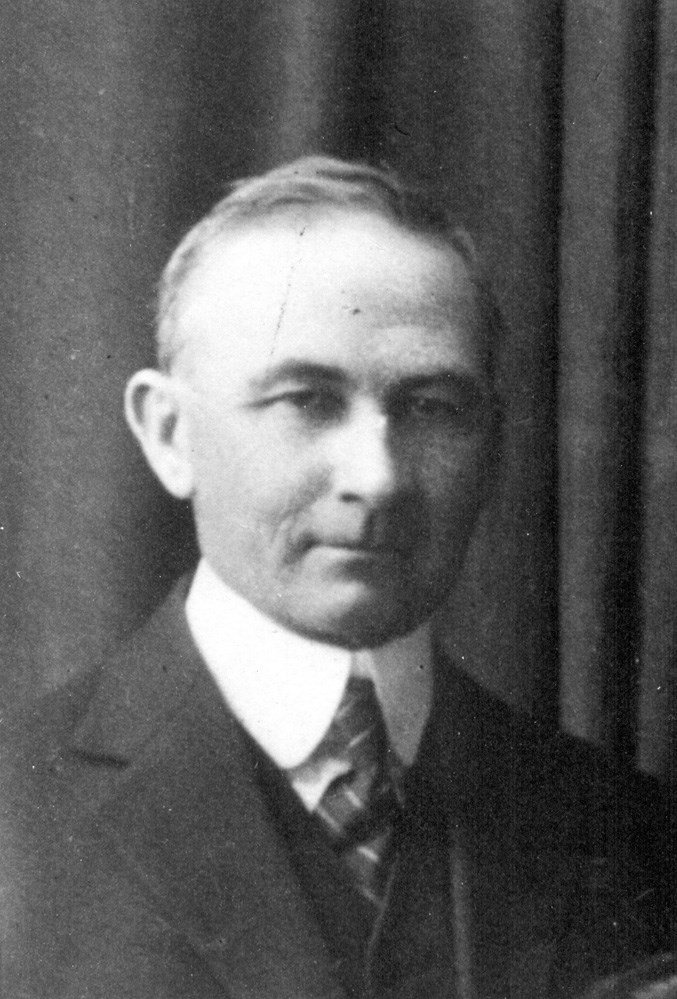A former Okotoks mayor left his mark in town, though his stay was short. George Welch moved from Ontario in 1912 to serve as manager of the Hogg and Lytle grain elevators that then stood in town. He and his family arrived from the bustling city of Oshawa on April 1. “’Having come from the even then fairly large city of Oshawa, Ont., we thought our new home was some kind of an April Fool’s joke, but we soon came to love the small village,’” wrote Welch’s daughter Sybil in the Century of Memories Okotoks history book. She would have been about 10 years old when the family settled into town. Okotoks museum specialist Kathy Coutts said Sybil’s reaction to the move wasn’t’ surprising, given the time. “In 1912, Okotoks was really a sleepy little town,” said Coutts. “Not much compared to the city off Oshawa. “Natural gas was just being installed into the community. There was electric light and there were telephones, but there was no running water, no sewer system, so it was probably a bit of a shock to the Welches.” Welch became mayor of Okotoks in 1918 and served two consecutive two-year terms from 1918-1919 and 1920-1921, she said. He then served a three-year term from 1923 to 1926 before moving back to Ontario. His influence on the town during his seven years of service led to roads being named in his honour – Welch Crescent and Welch Place, both in the Downey neighbourhood. He may have continued his terms as mayor, had work not beckoned him back east, said Coutts. “Hogg and Lytle had sold both grain elevators, so he went back to head office and was reassigned,” she said. He couldn’t stay away from politics though – Welch became the mayor of Picton, Ont. for a few years before retiring to Toronto, where he died in 1946, she said. “Clearly he was civic-minded wherever he went,” said Coutts. There is more in Okotoks known as part of the Welch legacy than two roads, she said. Initially, the family moved into a small home on the east end of town, and in 1919 they bought what is know as the Welch House, which used to stand at the corner of Elizabeth Street and Northridge Drive. It is now known as the Okotoks Museum and Archives, located on North Railway Street after being moved in the summer of 2000. Though Welch and his wife moved back to Ontario, they maintained ownership of the home until 1942, said Coutts. “They owned the house the longest in its history,” she said. “They rented it out from 1926 until 1942.” It was used as a primary residence for years, being owned by different families after the Welches sold the house, she said. The last time it was used as a residence was in 1975, when the Meaghers purchased the home and converted it to a daycare and nursery school, she said. In September 1989 it became the law office of Charles Dixon and constituency offices of the MP and MLA, she said. When the Province began work to divide Highway 2A, including its route through Okotoks, the Town acquired the Welch house and moved it down the street to where it currently sits. Welch and his wife moved to Ontario, as did one of their children, Cyril. However, daughter Edith became a nurse and married someone in Bellevue and son John (Ducky) and Sybil both stayed in Alberta. “Ducky worked from 1921 until 1943 in the oil patch, like a lot of people in Okotoks did,” said Coutts. “And he tragically died in 1943 as a result of a sour gas poisoning.” Sybil stayed closest to Okotoks. In the late 1920s, she began dating a man by the name of Clayton Young, who was the son of the High River mayor. It was during a time when the rivalry between Okotoks and High River was at its fiercest, said Coutts – especially when it came to hockey. “Okotoks Review and the High River Times share some of the brawls that would go on between the two hockey teams on the ice,” she said. “They were so fierce brawls would break out on the ice and then the brawls would spill over into the stands and hockey fans would be fighting each other, often ending up with some of them in their respective jails. “It probably caused quite a stir when it was discovered the daughter of the Okotoks mayor was dating the son of the High River mayor.” The pair were married in 1928 and settled in High River, she said.




